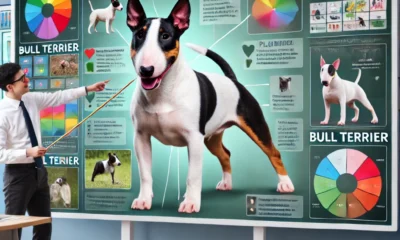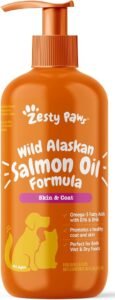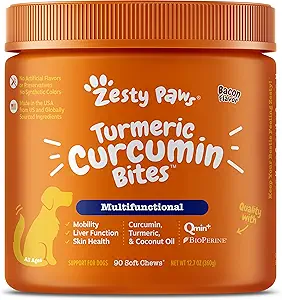Large Breeds
Golden Retriever: A Loyal and Loving Companion

Everything You Need About Golden Retrievers
Golden Retrievers are one of the most beloved dog breeds worldwide, and for good reason. Their friendly nature, intelligence, and stunning golden coats make them an all-time favorite among families, dog enthusiasts, and anyone looking for a loyal companion. This article will shed light on what makes these dogs so special, their care requirements, and why they might just be the perfect pet for you.
For more information regarding 4 seasonal cxcercieses of all dog breeds recommended by the doctors and experts,you can visit our youtube channel:
https://www.youtube.com/@Dogsreaders

A Brief History of Golden Retrievers
Golden Retrievers hail from Scotland, where they were originally bred in the 19th century. The breed was developed by crossing a Yellow Retriever with the now-extinct Tweed Water Spaniel, and later mixes with Irish Setters and Bloodhounds. Their original purpose was to retrieve game for hunters, which is why they are known for their soft mouths and excellent swimming abilities. Over time, their gentle temperament and trainability earned them a spot not just as hunting companions, but also as family pets and working dogs.

Golden Retriever Historical Table
|
Year |
Event |
|---|---|
|
19th century |
Bred by crossing a Yellow Retriever with the now-extinct Tweed Water Spaniel |
|
19th-20th century |
Further mixes with Irish Setters and Bloodhounds |
|
Present |
Recognized as a versatile breed, excelling as hunting companions, family pets, and working dogs |
This historical table provides an overview of the significant events in the development of Golden Retrievers, from their origins in the 19th century to their present-day recognition as a beloved and versatile breed.
Physical Characteristics
Golden Retrievers are medium to large-sized dogs with a strong, athletic build. Here’s what to expect in terms of their physical features:
- Size: Males usually weigh between 65-75 pounds, while females range from 55-65 pounds. They stand about 21-24 inches tall at the shoulder.
- Coat: Their coat is dense, water-repellent, and comes in shades of gold, ranging from light cream to deep golden hues.
- Features: They have soulful brown eyes, floppy ears, and a long, feathery tail.
They’re as graceful as they are robust, which makes them perfect for both cuddles on the couch and active outdoor adventures.

Golden Retriever Colors
Golden Retrievers are commonly recognized for their beautiful golden coat, which ranges from light cream to deep golden hues. However, it’s important to note that there are variations in coat colors available in the market. In addition to the traditional golden color, some breeders offer Golden Retrievers in the following coat colors:
- Red: These Golden Retrievers have a rich reddish coat, which can range from a deep mahogany to a lighter shade of red.
- Light Golden: This variation showcases a lighter shade of the golden coat, often with a cream-colored hue.
- Dark Golden: Dark Golden Retrievers have a more intense and deeper golden color, giving them a striking appearance.
- Caramel: Caramel-colored Golden Retrievers exhibit a warm and lighter shade of brown, resembling the color of caramel.

It’s important to choose a reliable breeder or adopt from a reliable source to ensure the health and authenticity of the Golden Retriever’s coat color.
Personality Traits
Golden Retrievers are famously friendly, making them an ideal choice for families with children or other pets. Their key personality traits include:
- Affectionate: They thrive on human interaction and are known to form strong bonds with their families.
- Intelligent: Goldens are quick learners, making training a breeze. Their intelligence also allows them to excel in activities like obedience, agility, and therapy work.
- Energetic: While they are calm indoors when well-exercised, they do require plenty of daily activities to keep them happy and healthy.
- Loyal: Golden Retrievers are deeply devoted to their owners and are often described as “people-pleasers.”
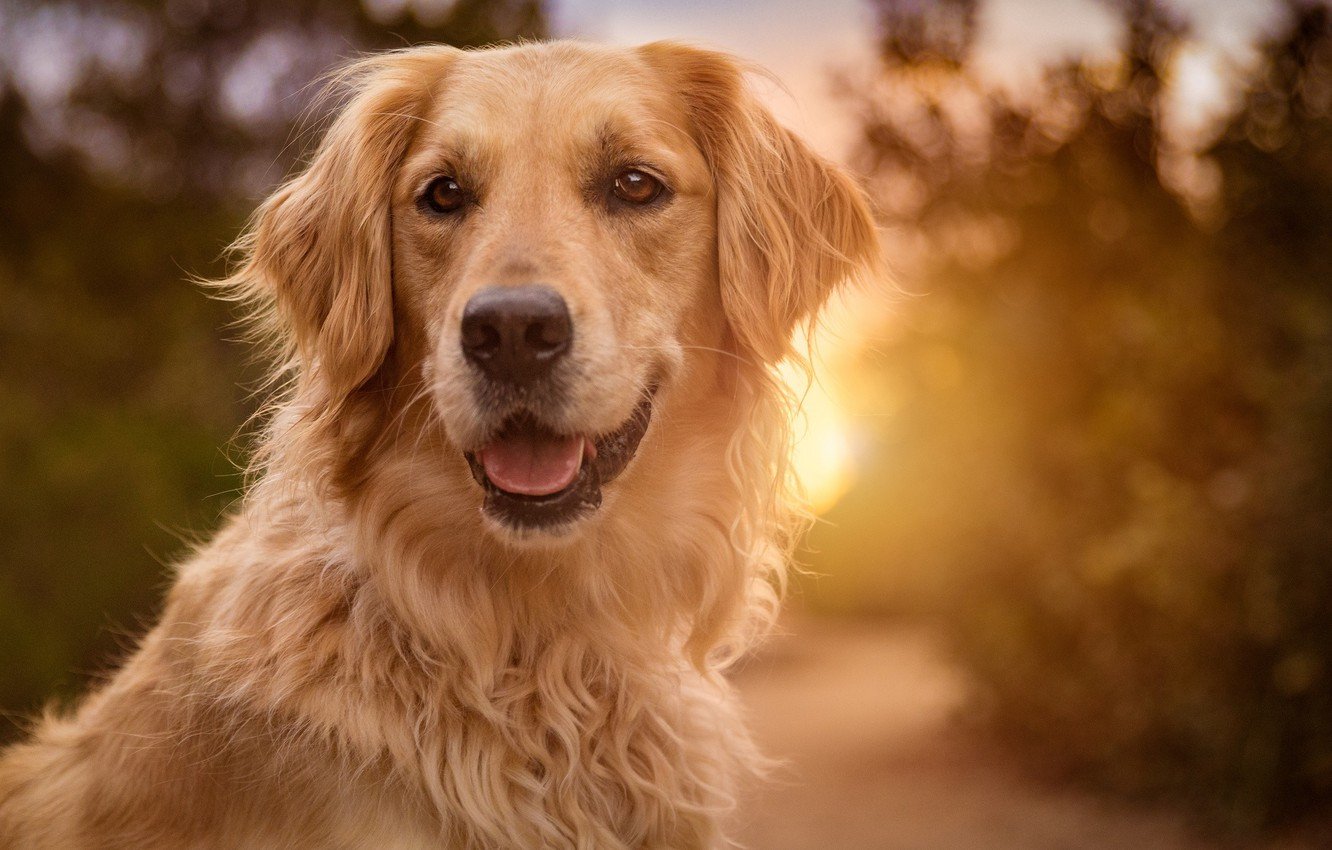
Care and Maintenance
Owning a Golden Retriever is rewarding, but it comes with responsibilities. Here’s what you’ll need to commit to:
1. Exercise Needs
Golden Retrievers are active dogs that enjoy outdoor adventures. Aim for at least 1-2 hours of daily exercise, which can include walks, runs, swimming, or fetch games.
2. Dietary Requirements
Provide your Golden Retriever with high-quality dog food that suits their age, size, and activity level. Watch their calorie intake to prevent obesity, as these dogs are prone to overeating.
3. Coat Care
Their beautiful coat needs regular care:
- Brush their coat 2-3 times a week to reduce shedding and prevent tangles.
- Bathe them as needed—usually once every 4-6 weeks or after muddy outings.
- Pay attention to their ears, which can be prone to infections. Clean them regularly to keep them healthy.

4. Health
Golden Retrievers are generally healthy, but like all breeds, they are prone to certain health conditions. Common issues include hip dysplasia, heart problems, and certain cancers. Regular vet visits and screenings can help catch and manage these conditions early.
6. Common Health Issues and Resources
While Golden Retrievers are generally healthy dogs, it’s important to be aware of common health conditions that can affect the breed. Here are some common health issues and trusted veterinary resources for more information:
- Hip Dysplasia: This condition occurs when the hip joint doesn’t develop properly, leading to pain and mobility issues. For more information, visit the Orthopedic Foundation for Animals website.
- Heart Problems: Golden Retrievers can be prone to certain heart conditions, including sub valvular aortic stenosis. Learn more about heart health for Golden Retrievers at the Golden Retriever Club of America website.
- Cancer: Certain types of cancer, such as lymphoma and hemangiosarcoma, are more prevalent in Golden Retrievers. Stay informed about cancer prevention and treatment options at the Morris Animal Foundation website.
These resources provide valuable insights into common health issues in Golden Retrievers and provide guidance on prevention, management, and treatment. Remember, regular veterinary check-ups and open communication with your veterinarian are essential for maintaining your Golden Retriever’s health and well-being.

5. Training and Socialization
Golden are eager to please and respond well to positive reinforcement training. Early socialization is also crucial to ensure they grow up to be well-mannered, confident dogs.
Golden Retrievers as Working Dogs
Golden Retrievers aren’t just excellent pets; they’re also valuable working dogs. Their intelligence and gentle nature make them well-suited for roles such as:
- Guide Dogs: Many Golden Retrievers are trained to assist visually impaired individuals.
- Therapy Dogs: They provide comfort and support to people in hospitals, schools, and nursing homes.
- Search and Rescue Dogs: Their keen sense of smell and determination are invaluable in search-and-rescue missions.
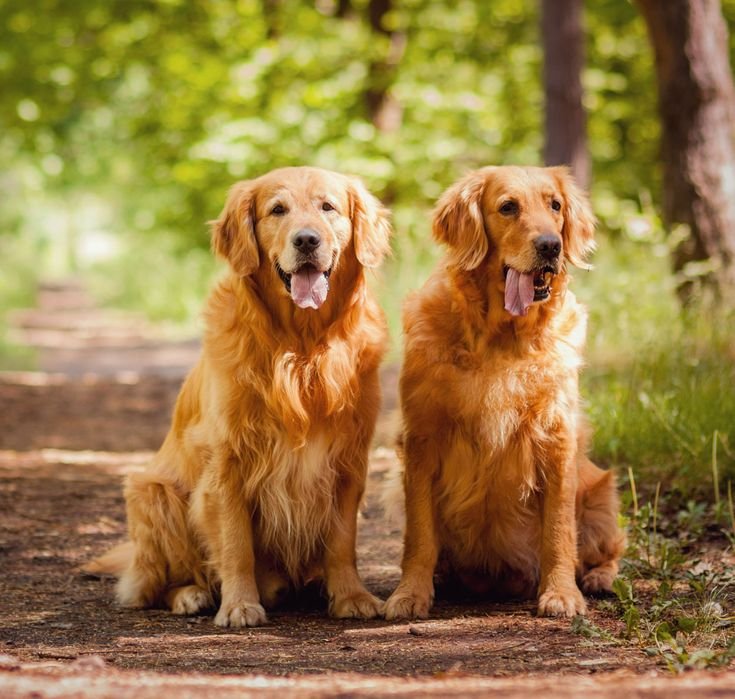
Why Golden Retrievers Are a Great Choice
There’s a reason Golden Retrievers have remained such a popular breed over the years. They check all the boxes when it comes to what most people look for in a dog: affectionate, intelligent, and versatile. Whether you’re looking for a jogging partner, a loyal family member, or a dog that can brighten someone’s day as a therapy companion, a Golden Retriever can do it all.
Is a Golden Retriever Right for You?
While Golden Retrievers are fantastic pets, they aren’t the perfect fit for everyone. Consider the following before bringing one home:
- Are you ready to meet their exercise and grooming needs?
- Do you have enough time to dedicate to training and interaction?
- Is your living space suitable for a medium to large, active dog?
If you answered yes, a Golden Retriever might be the perfect addition to your family.

Related Books 📚
If you’re considering bringing a Golden Retriever into your life or simply want to learn more about this amazing breed, here are a few books that can deepen your understanding and provide valuable insights:
- “The Complete Golden Retriever Handbook” by Linda Whitwam: This comprehensive guide covers everything you need to know about Golden Retrievers, from their history and breed characteristics to training tips, health care, and nutrition advice.
- “Golden Retrievers for Dummies” by Nona Kilgore Bauer: A popular choice for both new and experienced Golden Retriever owners, this book offers practical advice on raising and caring for your furry friend, including tips on training, grooming, and understanding their unique temperament.
- “The Everything Golden Retriever Book” by Gerilyn J. Bielakiewicz: This all-in-one resource covers a wide range of topics, including puppy care, obedience training, socialization, and even activities you can enjoy with your Golden Retriever, such as agility and therapy work.
Remember, reading books about Golden Retrievers can provide you with helpful tips and knowledge, but nothing compares to the hands-on experience of owning and caring for one of these incredible dogs.

FAQs
Q: Are Golden Retrievers good with children?
A: Yes, Golden Retrievers are known for their gentle and friendly nature, making them excellent companions for children. They are patient, tolerant, and often form strong bonds with kids.
Q: Do Golden Retrievers require a lot of exercise?
A: Yes, Golden Retrievers are an active breed that requires regular exercise to keep them physically and mentally stimulated. Daily walks, playtime, and activities like swimming or retrieving games are essential to keep them happy and healthy.
Q: Are Golden Retrievers easy to train?
A: Yes, Golden Retrievers are highly trained and eager to please their owners. They respond well to positive reinforcement-based training methods and enjoy learning new commands and tricks.
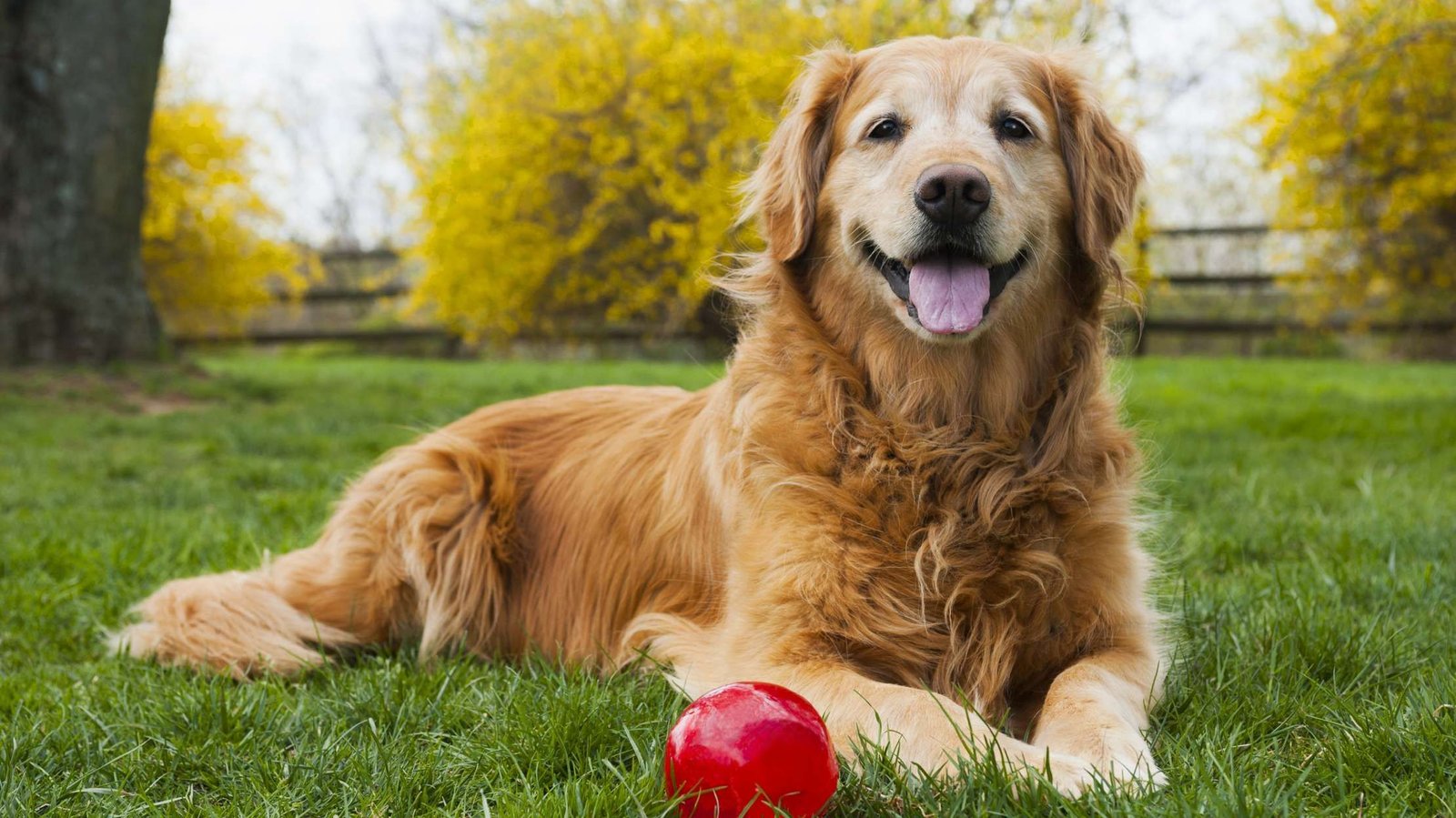
Q: Do Golden Retrievers shed a lot?
A: Yes, Golden Retrievers have a dense double coat that sheds seasonally. Regular grooming, including brushing their fur, can help manage shedding. However, be prepared for some level of shedding throughout the year.
Q: Are Golden Retrievers good for families with allergies?
A: While no dog is hypoallergenic, some individuals with allergies may tolerate Golden Retrievers better than other breeds. Their minimal dander and low-shedding coat can be less allergenic for some people, but it’s important to spend time around the breed to assess individual reactions.
Remember, it’s crucial to consider your lifestyle, home environment, and individual preferences when deciding if a Golden Retriever is the right fit for you and your family.
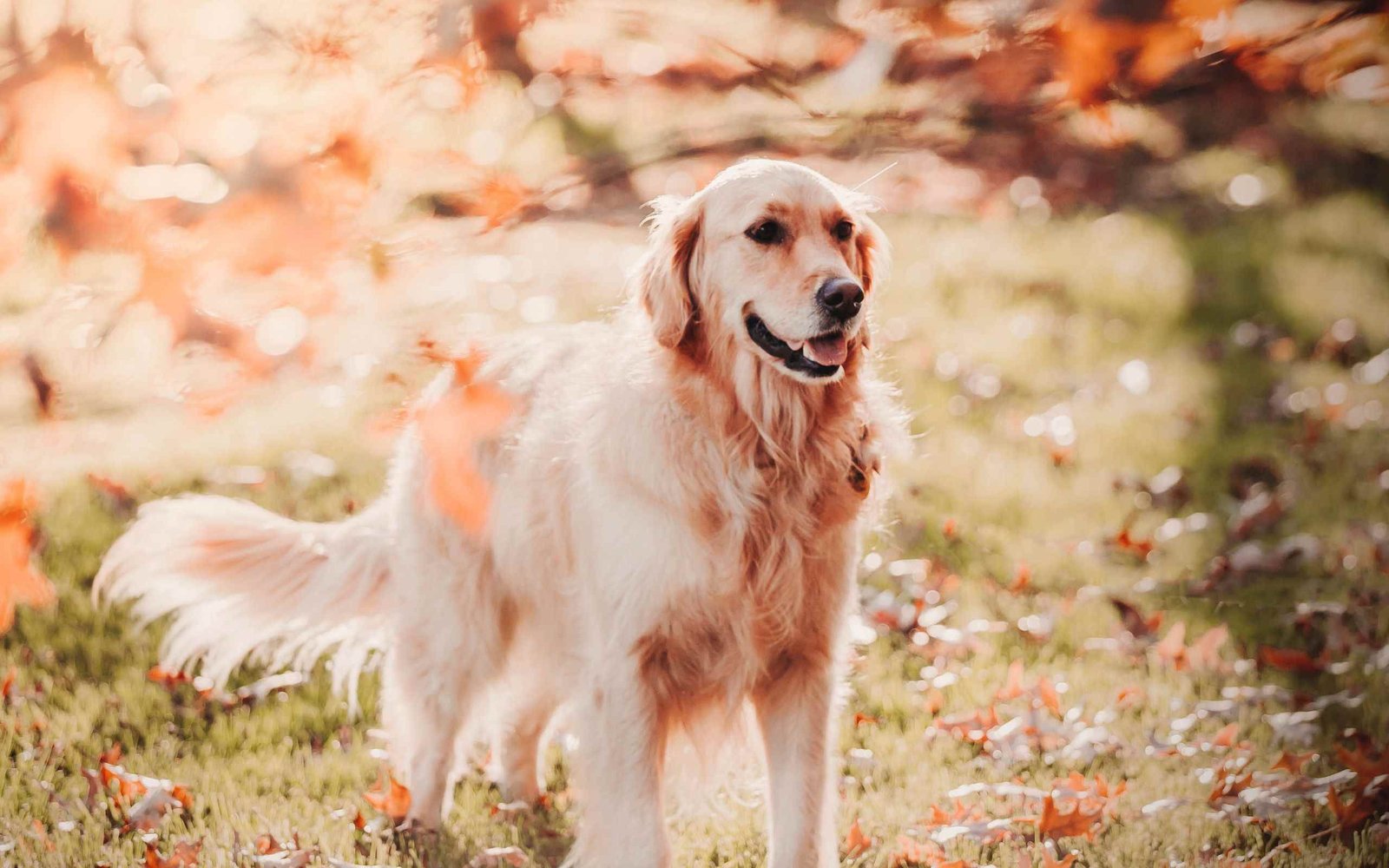
Golden Retriever: Latest Research and Final Verdict
Recent research on Golden Retrievers has reaffirmed their reputation as one of the most beloved dog breeds. Studies have shown that their friendly and gentle nature, combined with their high intelligence, make them excellent family pets. They are known for their adaptability and are often successful in various roles, including therapy dogs, search and rescue dogs, and assistance dogs.
In terms of health, Golden Retrievers can be prone to certain conditions, such as hip dysplasia, cancer, and heart disease. However, responsible breeding practices and regular veterinary care can help mitigate these risks. It’s essential to choose a reputable breeder who conducts health screenings and genetic testing to ensure the overall well-being of the breed.
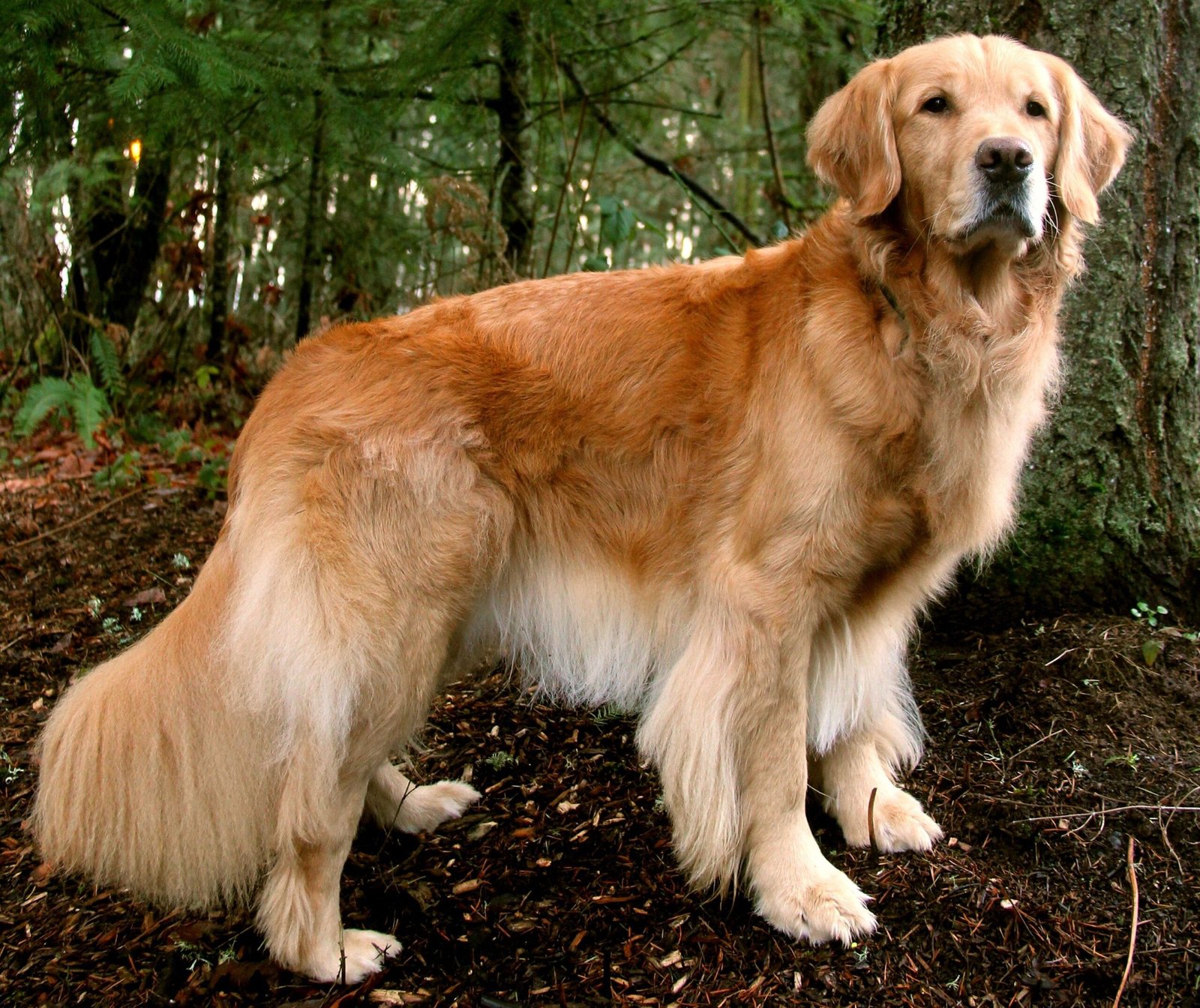
Considering all the factors, Golden Retrievers are generally well-suited to families and individuals who can provide them with the attention, exercise, and mental stimulation they need. They thrive in environments where they are treated as part of the family and have ample opportunities for socialization and exercise.
In conclusion, Golden Retrievers are a popular choice for good reason. Their loving and loyal nature, coupled with their versatility and adaptability, make them an excellent addition to many households. However, it is essential to conduct thorough research, assess your lifestyle and commitment level, and consider any specific health concerns before bringing a Golden Retriever into your life. With proper care and love, they can bring immense joy and companionship for many years to come.

Large Breeds
The Dangerous Effects of Loneliness: on Your Dog’s Heart Health
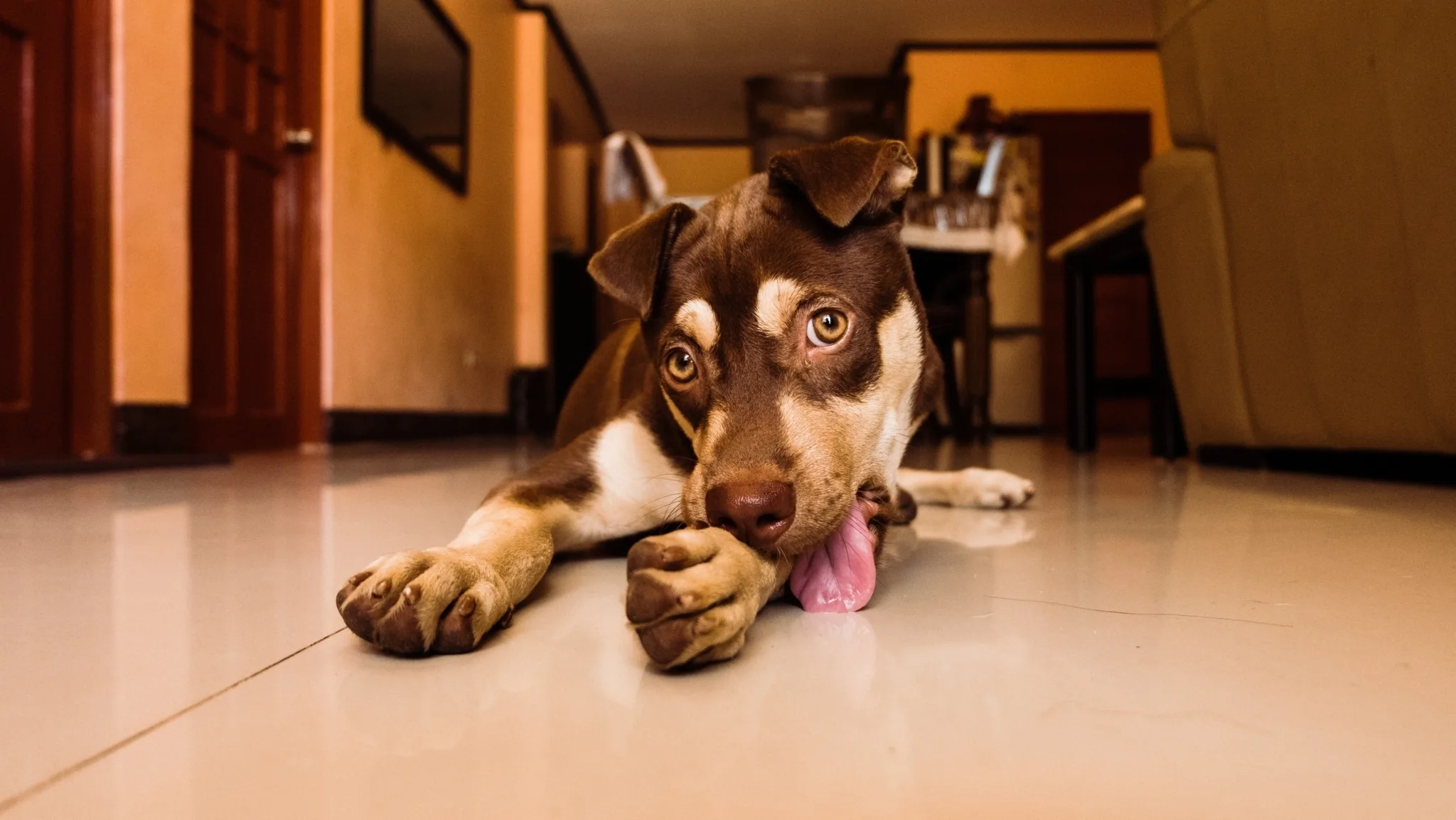
Introduction

The Dangerous Effects of Loneliness: Dogs are social animals that thrive on companionship and interaction. However, in today’s fast-paced world, many dogs spend long hours alone, leading to a hidden health crisis—loneliness and its impact on heart health. Understanding these risks and taking proactive measures can protect your furry friend from developing serious cardiovascular issues.
For more information regarding 4 seasonal cxcercieses of all dog breeds recommended by the doctors and experts,you can visit our youtube channel:
How Loneliness Affects a Dog’s Heart

Loneliness is more than just an emotional state; it has physiological consequences that can harm a dog’s heart over time.
1. Increased Stress and Anxiety
When a dog is left alone for extended periods, it experiences heightened levels of cortisol (the stress hormone). Chronic stress contributes to high blood pressure, which puts strain on the heart, increasing the risk of heart disease.
2. Irregular Heart Rate
Dogs experiencing prolonged loneliness often show signs of an irregular heartbeat (arrhythmia). This condition occurs when the heart struggles to maintain a normal rhythm due to prolonged stress and anxiety.
3. Obesity and Poor Cardiovascular Health
Lonely dogs are less active, which can lead to weight gain and obesity. Excess weight places additional strain on the heart, increasing the likelihood of cardiovascular diseases such as hypertension and congestive heart failure.
4. Weakened Immune System
Chronic loneliness weakens the immune system, making dogs more prone to infections. A compromised immune system can indirectly contribute to inflammation in the arteries, which negatively affects heart health.
Which Dogs Are Most at Risk?

Some dogs are more susceptible to the negative effects of loneliness than others.
| Dog Category | Risk Level |
|---|---|
| Puppies | 85% – Highly vulnerable due to early emotional development |
| Adult Dogs | 60% – Moderate risk, depending on breed and temperament |
| Senior Dogs | 75% – Increased risk due to aging and weakened cardiovascular system |
Certain breeds that require constant social interaction, such as Golden Retrievers, Labrador Retrievers, and German Shepherds, are more prone to loneliness-related heart issues.
Signs That Your Dog is Suffering from Loneliness

Detecting loneliness early can help prevent serious health problems. Common signs include:
- Excessive barking or howling when left alone
- Pacing or restlessness
- Destructive behavior (chewing furniture, scratching doors)
- Loss of appetite
- Lethargy or disinterest in playtime
- Clinginess when you are home
If your dog exhibits these behaviors, it’s essential to take action before heart-related complications develop.
How to Prevent Loneliness and Protect Your Dog’s Heart

Ensuring your dog feels secure and engaged can significantly reduce loneliness-related health risks. Here’s how:
1. Increase Social Interaction
- Spend at least 30-60 minutes a day engaging with your dog through play and training.
- Arrange playdates with other friendly dogs to keep them socially active.
- Take your dog to dog parks where they can interact with other pets and people.
2. Provide Mental Stimulation
- Use interactive puzzle toys to keep your dog mentally engaged while alone.
- Rotate their toys regularly to maintain interest.
- Play calming music or use pet-friendly TV programs to create a soothing atmosphere.
3. Establish a Routine

- Dogs thrive on consistency. A set feeding, walking, and play schedule reduces anxiety.
- Leave a piece of clothing with your scent to comfort your dog when you’re away.
4. Consider a Companion Pet
- If feasible, adopting a second pet can provide companionship for a lonely dog.
- Ensure both pets have compatible temperaments before introducing them.
5. Hire a Dog Walker or Pet Sitter
- If you work long hours, hiring a professional dog walker can provide essential midday exercise and interaction.
- A pet sitter or dog daycare service is a great alternative for dogs that struggle with isolation.
FAQs

1. How long can a dog safely be left alone?
Most adult dogs can handle 4-6 hours alone, while puppies and senior dogs should not be left alone for more than 2-3 hours at a time.
2. Can loneliness shorten a dog’s lifespan?
Yes. Studies suggest that dogs suffering from chronic loneliness and stress may have a 10-15% shorter lifespan due to heart complications and weakened immunity.
3. Are certain dog breeds more prone to loneliness-related heart issues?
Yes. Social and working breeds such as Labrador Retrievers, German Shepherds, and Border Collies are more susceptible to stress and loneliness.
Can Anxiety Supplements Help Prevent Loneliness-Related Health Issues?

| Dog Age Group | Recommended Supplement | Benefits | Vet Recommendation |
|---|---|---|---|
| Puppies | Colostrum-Based Supplements | Strengthens the immune system and promotes relaxation | Dr. Sarah Bennett, DVM (Puppy Wellness Specialist) |
| Adult Dogs | Omega-3 &
|
Reduces stress, supports heart health | Dr. James Carter, DVM (Canine Cardiology Expert) |
| Senior Dogs | Probiotics
|
Eases anxiety, supports digestion, improves heart function | Dr. Emily Ross, DVM (Senior Dog Care Specialist) |
These expert-recommended supplements help combat stress-induced heart issues caused by loneliness. Always consult your vet before introducing new supplements to your dog’s routine.
Would you like any further refinements? 😊
Yes. Vet-approved calming supplements like L-theanine, valerian root, and chamomile can help reduce anxiety in dogs that experience separation stress.
5. What is the best way to monitor my dog’s heart health?
Regular vet check-ups, heart rate monitoring devices, and observing behavior changes can help track your dog’s cardiovascular health.
Closing Statement
Loneliness is not just an emotional problem for dogs—it is a serious health concern that can lead to life-threatening heart conditions. By understanding the risks and taking proactive steps, you can ensure your dog remains happy, healthy, and full of life.
Stay informed with DogsReader for more expert insights into your dog’s well-being! 🐶❤️
Large Breeds
The Silent Killer: How Indoor Air Quality Affects Your Dog’s Health
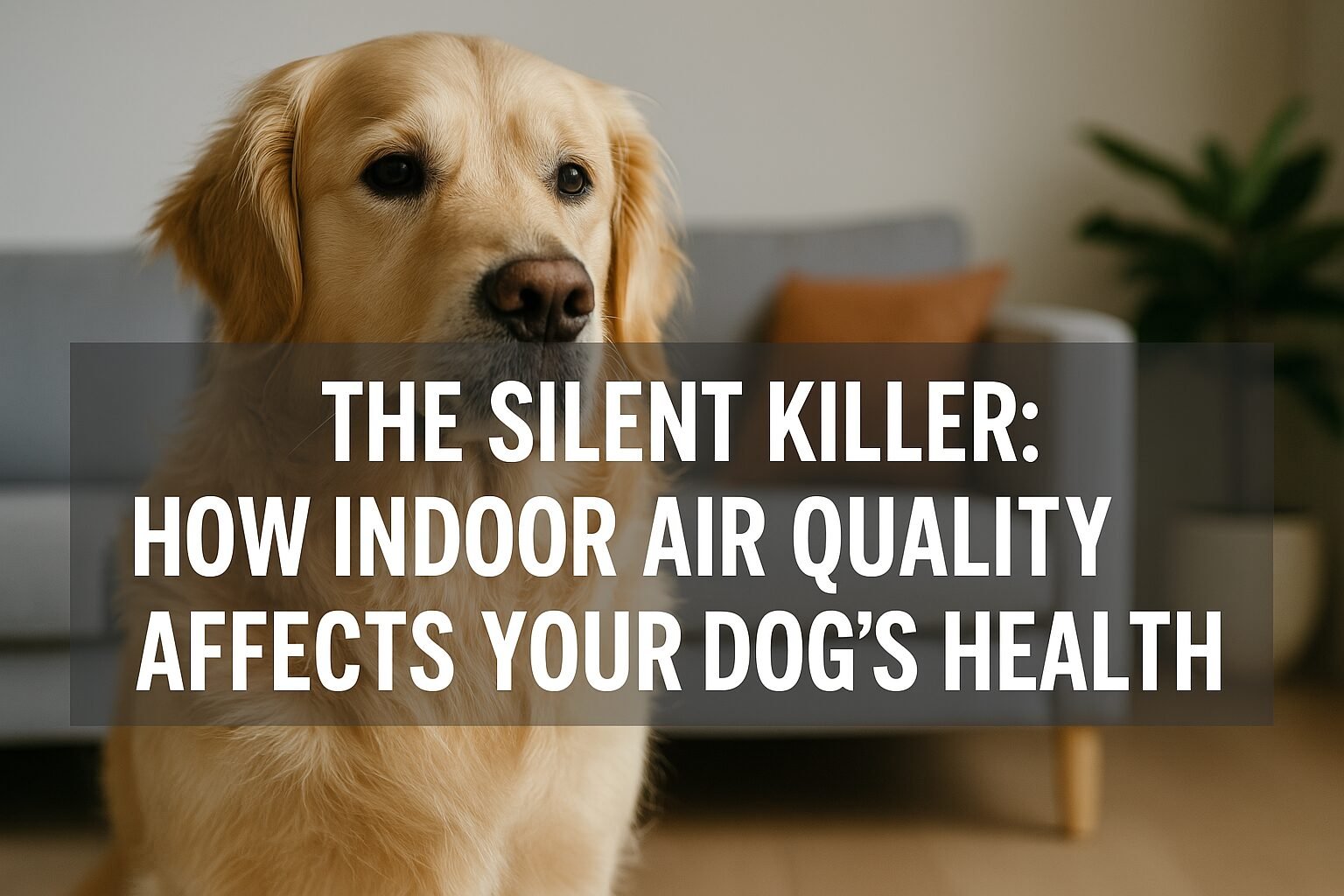
Understand The Topic
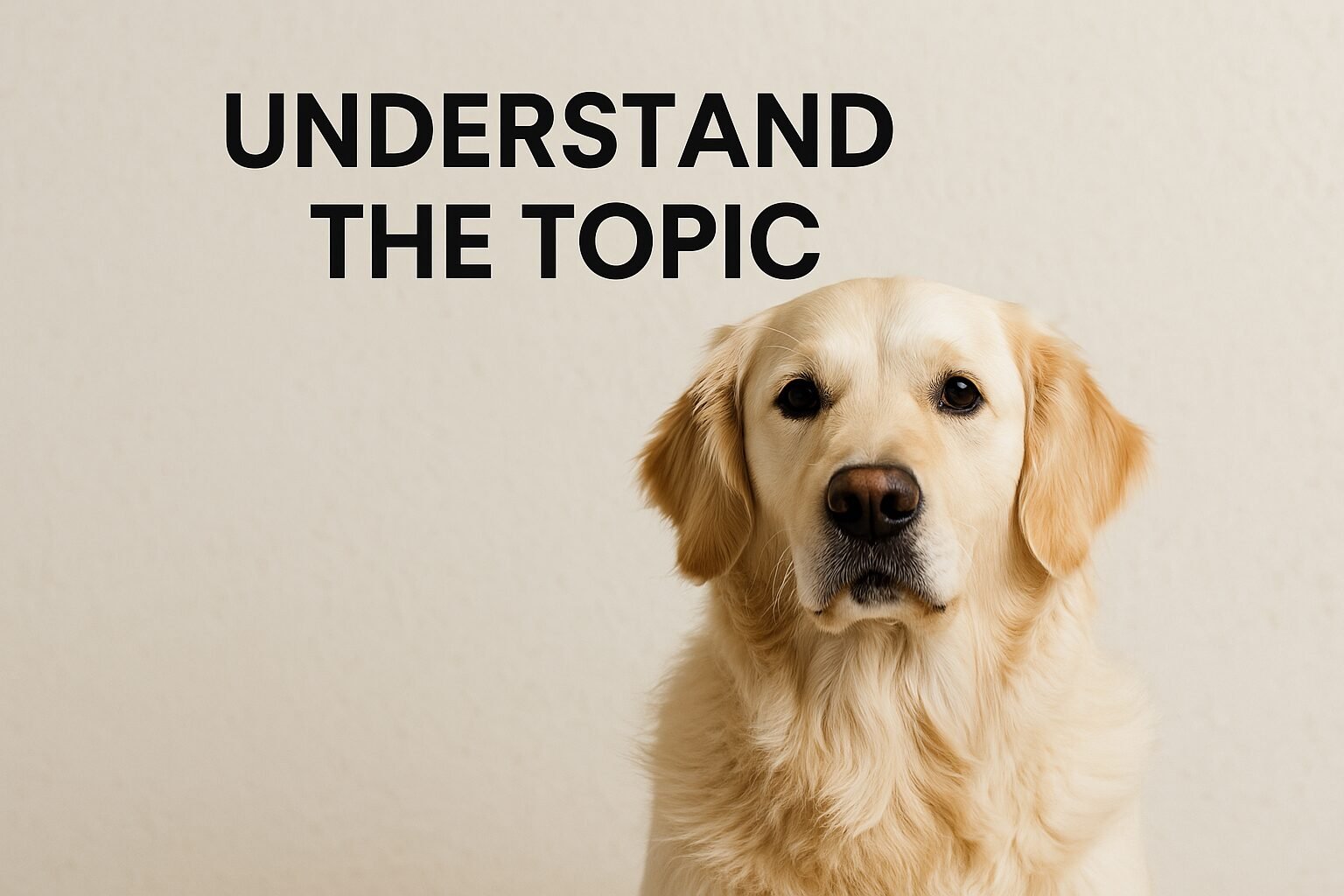
The Silent Killer: Many dog owners are unaware of the hidden dangers lurking in their homes—indoor air pollution. The quality of air inside your house can have a severe impact on your dog’s health, leading to respiratory issues, allergies, and even long-term diseases. Understanding these risks and taking preventive measures can ensure your furry companion lives a healthy life.
For more information regarding 4 seasonal cxcercieses of all dog breeds recommended by the doctors and experts,you can visit our youtube channel:
How Poor Indoor Air Quality Affects Dogs

Even though we may not notice, harmful pollutants in the air can directly impact a dog’s respiratory system, skin, and overall well-being.
1. Respiratory Issues
Polluted indoor air can cause breathing difficulties, coughing, and chronic respiratory diseases in dogs.
2. Allergies and Skin Problems
Dust, mold, and pet dander can trigger allergies, leading to excessive scratching, redness, and irritation.
3. Increased Risk of Cancer
Long-term exposure to airborne toxins like tobacco smoke and chemical fumes may increase the risk of cancer in dogs.
4. Weakened Immune System
Toxins in the air can weaken your dog’s immune system, making them more susceptible to infections and illnesses.
How Air Quality Affects Different Dog Sizes

The impact of indoor air pollution varies depending on a dog’s size, age, and breed.
1. Puppies (80% More Susceptible)
Young dogs have underdeveloped immune systems, making them highly vulnerable to airborne pollutants.
2. Adult Dogs (50% Susceptible)
While stronger than puppies, adult dogs can still develop respiratory and allergic reactions over time.
3. Senior Dogs (70% Susceptible)
Older dogs have weaker lungs and immune systems, making them more prone to illnesses caused by poor air quality.
Indoor Air Pollutants That Harm Dogs
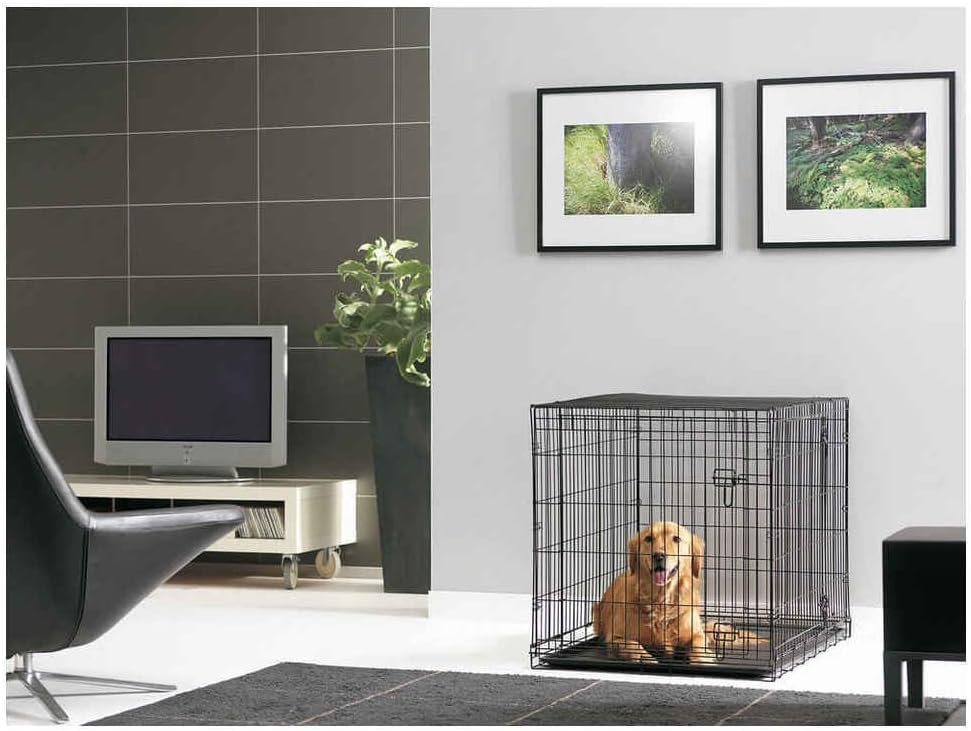
Identifying and eliminating harmful pollutants can significantly improve your dog’s health.
1. Tobacco Smoke
Second-hand smoke increases the risk of respiratory infections, allergies, and even cancer in dogs.
2. Household Cleaners
Many cleaning products release toxic fumes that dogs inhale, leading to respiratory distress.
3. Mold and Mildew
Fungal spores in damp areas can cause lung infections and allergic reactions in dogs.
4. Poor Ventilation
Stale air allows pollutants to accumulate, making it harder for dogs to breathe clean oxygen.
Solutions for Urban Dog Owners

Living in an urban environment presents unique challenges, but there are effective ways to improve indoor air quality.
1. Invest in Air Purifiers
HEPA filters help remove pet dander, allergens, and airborne toxins from your home.
2. Regular Ventilation
Opening windows for at least 10 minutes daily allows fresh air circulation, reducing indoor pollution.
3. Use Natural Cleaning Products
Avoid harsh chemicals and opt for pet-safe, eco-friendly cleaning solutions.
4. Keep Your Home Dust-Free
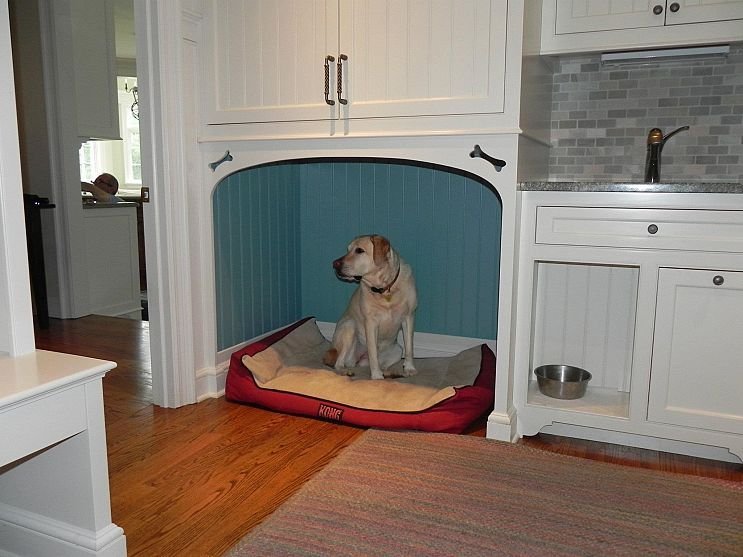
Regular vacuuming and dusting prevent allergens from accumulating in your living space.
5. No Smoking Indoors
Keeping smoke away from pets eliminates one of the most harmful indoor air pollutants.
Top Supplements for Strengthening Your Dog’s Immune System

| Dog Life Stage | Recommended Supplement | Top Brands |
|---|---|---|
| Puppies | Omega-3,
|
Zesty Paws, Nordic Naturals, Nutri-Vet |
| Adult Dogs | Multivitamins,
|
VetriScience, NaturVet, PetHonesty |
| Senior Dogs | Glucosamine,
|
Cosequin, Purina Pro Plan, Zesty Paws |
How to Use Supplements – DogsReader Expert Advice
| Dog Life Stage | Recommended Supplement | Dosage & Usage | Vet Recommendation |
|---|---|---|---|
| Puppies | Omega-3, Colostrum, Probiotics | Given daily with meals, follow weight-based dosing. | Dr. Emily Carter, DVM (Pet Wellness Clinic) recommends starting with a low dose and using liquid Omega-3 for easier digestion. |
| Adult Dogs | Multivitamins, Antioxidants, Echinacea | Administer daily or as needed, based on activity level. | Dr. Robert Hayes, DVM (Healthy Paws Vet Center) suggests using vet-approved supplements and monitoring for allergic reactions. |
| Senior Dogs | Glucosamine, Turmeric, Immune Boosters | Given daily, often mixed with food for better absorption. | Dr. Lisa Monroe, DVM (Senior Pet Care Clinic) advises combining with a balanced diet and regular vet check-ups for maximum benefits. |
Closing Statement
Your dog’s health is directly affected by the air they breathe. By making simple adjustments in your home, you can prevent serious health issues and provide your pet with a safer, cleaner environment. Take action today and ensure your furry friend thrives in a healthy indoor space!
Stay informed with DogsReader for more expert insights into your dog’s well-being! 🐶✨
FAQs
1. How do I know if my indoor air quality is bad for my dog?
If your dog is frequently sneezing, coughing, scratching, or showing signs of breathing difficulties, your indoor air quality may be poor. Other signs include excessive eye watering and skin irritation.
2. Can air purifiers really help my dog?
Yes! Air purifiers with HEPA filters effectively remove allergens, dust, and toxins from the air, making it safer for your dog to breathe.
3. Are scented candles or air fresheners harmful to dogs?
Many scented candles and air fresheners contain chemicals that can irritate a dog’s respiratory system. Opt for natural essential oil diffusers instead, but ensure the oils used are pet-safe.
4. How often should I clean my home to maintain good air quality for my dog?
Vacuuming and dusting at least twice a week, along with regular ventilation, can significantly improve indoor air quality. Washing your dog’s bedding and toys frequently also helps reduce allergens.
5. What is the best way to improve air quality in a small apartment with a dog?
Using an air purifier, ensuring proper ventilation, and keeping the apartment clean from dust and pet dander are the best ways to improve air quality. Regularly changing HVAC filters is also important.
6. Can poor air quality affect my dog’s mood?
Yes, poor air quality can lead to lethargy, irritability, and even increased anxiety in dogs due to difficulty breathing or discomfort.
7. What indoor plants can help improve air quality for my dog?
Pet-safe plants like spider plants, areca palms, and bamboo palms can naturally filter indoor air and improve oxygen levels.
8. Should I be concerned about cooking fumes affecting my dog?
Yes, cooking fumes, especially from burnt food or oil, can release harmful particles into the air. Using a range hood or opening windows while cooking helps reduce exposure.
9. How can I test my home’s air quality?
You can use an indoor air quality monitor to measure pollutant levels, humidity, and ventilation effectiveness. These devices help identify problem areas in your home.
10. What immediate steps can I take to protect my dog from indoor air pollution?
Stop smoking indoors, switch to pet-safe cleaning products, improve ventilation, and use an air purifier to quickly reduce indoor pollutants.
Large Breeds
Dog Grooming Mistakes: and How to Avoid Them
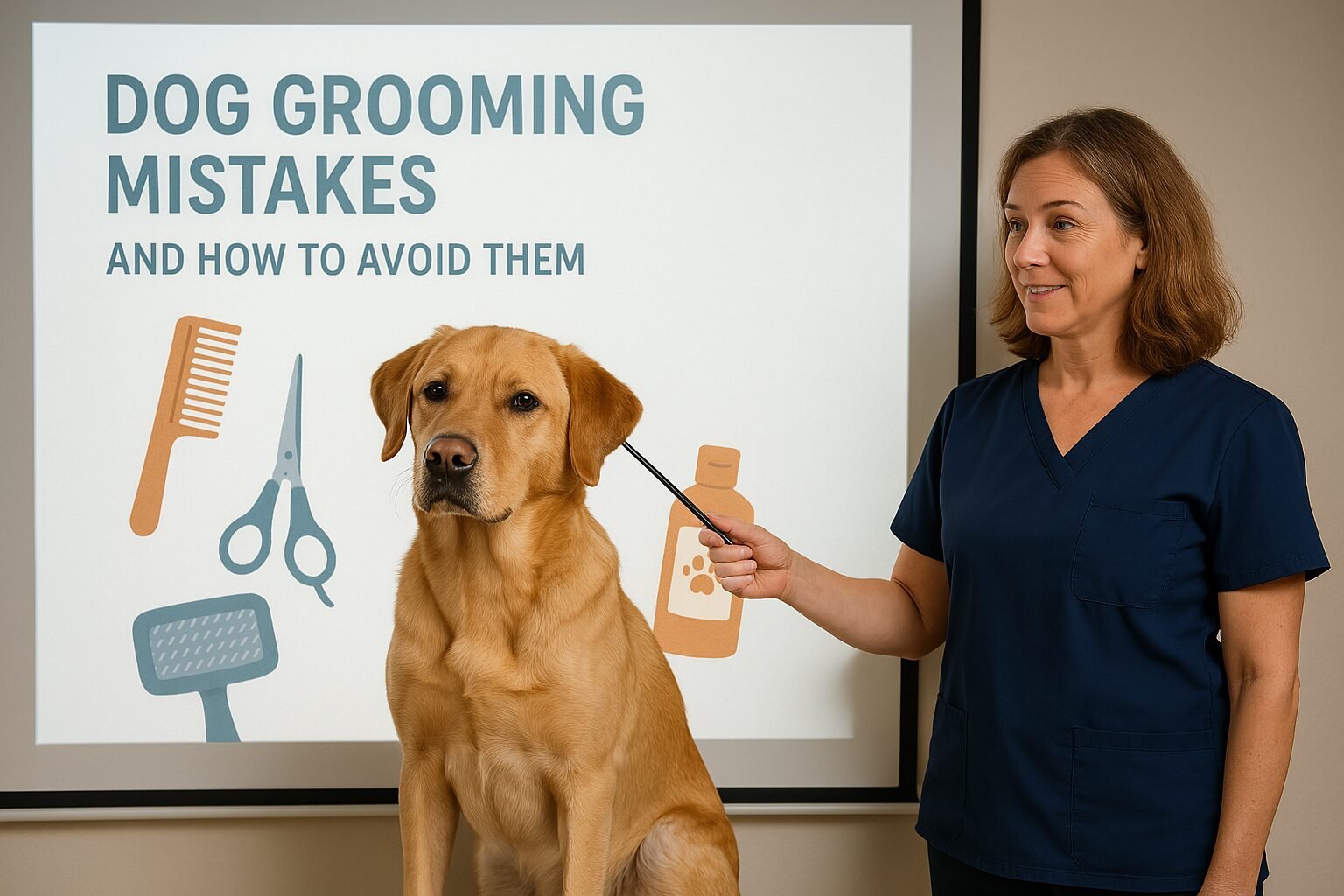
10 Common Mistakes
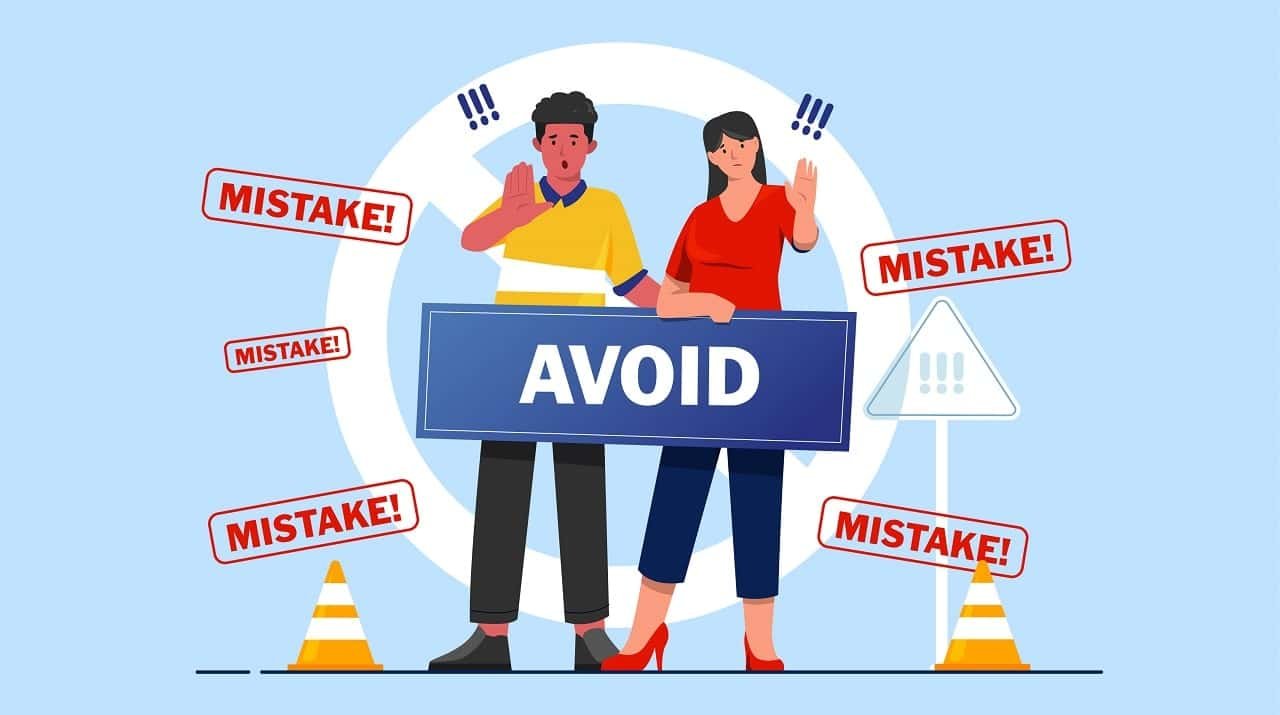
Dog Grooming Mistakes: Grooming is an essential part of dog care, ensuring their health, hygiene, and overall well-being. However, many dog owners unknowingly make mistakes that can lead to discomfort, infections, or even long-term health issues. In this guide, we’ll highlight 10 common dog grooming mistakes and provide expert tips to help you groom your pup like a pro!
For more information regarding 4 seasonal cxcercieses of all dog breeds recommended by the doctors and experts,you can visit our youtube channel:
1. Skipping Regular Brushing

Mistake: Many owners assume that brushing is only necessary for long-haired breeds, but all dogs benefit from regular brushing. Skipping it can lead to matting, excessive shedding, and skin issues.
How to Avoid: Brush your dog at least twice a week (daily for long-haired breeds). Use breed-appropriate brushes, such as a slicker brush for thick coats and a rubber brush for short-haired dogs.
Pros & Cons of Brushing
| Pros | Cons |
|---|---|
| Prevents matting and shedding | Requires time and consistency |
| Improves circulation and skin health | Some dogs may resist brushing initially |
| Strengthens bond with your dog | Needs the right tools for different coat types |
2. Bathing Too Frequently or Not Enough

Mistake: Overbathing can strip essential oils from your dog’s coat, leading to dry, itchy skin, while infrequent bathing can cause odor and skin infections.
How to Avoid: Follow a breed-specific bathing schedule—typically once every 4–6 weeks. Use dog-safe, pH-balanced shampoos to maintain a healthy coat.
Pros & Cons of Bathing
| Pros | Cons |
| Removes dirt and odors | Overbathing can cause dry skin |
| Keeps skin healthy and hydrated | Some dogs dislike water and bathing |
| Prevents skin infections | Requires proper drying to prevent fungus growth |
3. Ignoring Ear Cleaning
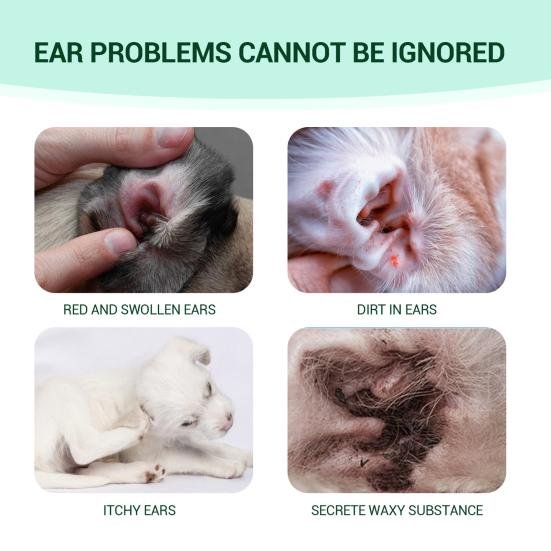
Mistake: Neglecting ear care can result in infections, especially in floppy-eared breeds like Cocker Spaniels and Basset Hounds.
How to Avoid: Clean your dog’s ears once a week with a vet-approved ear cleaner. Avoid using cotton swabs inside the ear canal, as they can push debris deeper.
Pros & Cons of Ear Cleaning
| Pros | Cons |
| Prevents infections and wax buildup | Some dogs dislike ear handling |
| Reduces bad odors | Requires the right cleaning solution |
| Helps detect ear mites early | Overcleaning can irritate the ears |
4. Cutting Nails Too Short or Ignoring Them

Pros & Cons of Nail Trimming
| Pros | Cons |
| Prevents joint problems and discomfort | Risk of cutting too short and causing bleeding |
| Reduces scratches on furniture and floors | Some dogs resist nail trimming |
| Improves walking posture | Requires proper technique and tools |
Mistake: Long nails can cause discomfort, affect walking posture, and lead to joint issues. Cutting too short can lead to painful bleeding.
How to Avoid: Trim nails every 2–4 weeks, using a dog nail clipper or grinder. If you’re unsure, visit a groomer or vet for guidance.
5. Using Human Shampoo on Dogs

Mistake: Human shampoos contain harsh chemicals that can disrupt a dog’s skin pH balance, leading to irritation.
How to Avoid: Always use a vet-recommended dog shampoo to maintain coat health and avoid allergies.
6. Shaving Double-Coated Breeds
Mistake: Many owners shave dogs like Huskies or Golden Retrievers in summer, thinking it helps them cool down. In reality, this damages their natural coat, leading to overheating and sunburn.
How to Avoid: Instead of shaving, opt for regular deshedding sessions with an undercoat rake to keep their coat breathable.
7. Using the Wrong Grooming Tools

Mistake: Using the wrong brushes, clippers, or combs can make grooming ineffective and uncomfortable for your dog.
How to Avoid: Invest in high-quality grooming tools suited for your dog’s coat type. Consult a professional groomer for recommendations.
Essential Grooming Tools for Your Dog
How to Use Grooming Tools – Expert Guide by DogsReader

| Tool Type | Best Usage Guide |
| Slicker Brush | Brush in the direction of hair growth, using gentle strokes to detangle without pulling. |
| Rubber Brush | Use in circular motions to loosen dirt and hair, great for short-haired breeds. |
| Undercoat Rake | Use with light pressure on double-coated breeds to remove loose undercoat without damaging the topcoat. |
| Nail Clippers/Grinder | Clip small sections at a time, avoiding the quick; grinders help smooth rough edges. |
| Dog-Safe Shampoo | Wet coat thoroughly, lather with a small amount, and rinse completely to prevent residue buildup. |
| Vet-Approved Ear Cleaner | Apply cleaner to a cotton pad and gently wipe the ear flap and outer canal, avoiding deep insertion. |
8. Not Checking for Parasites
Mistake: Fleas, ticks, and mites often go unnoticed, leading to infestations and skin infections.
How to Avoid: Regularly check your dog’s ears, belly, and between the paws for signs of parasites. Use vet-approved flea & tick preventatives year-round.
9. Ignoring Dental Hygiene
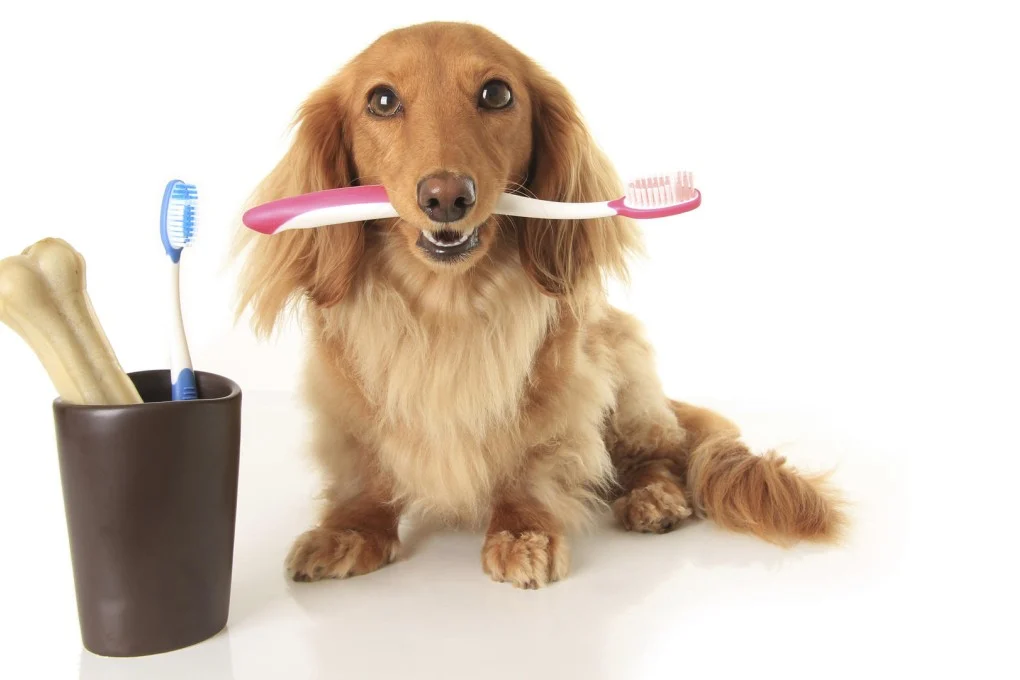
Mistake: Many owners overlook dental care, leading to tartar buildup, gum disease, and bad breath.
How to Avoid: Brush your dog’s teeth at least 3 times a week using a (dog-safe toothbrush) – and – ( toothpaste. ) Dental chews and vet-approved oral rinses also help.
10. Rushing Through Grooming Sessions

Mistake: Grooming in a hurry can make your dog anxious and increase the risk of injury.
How to Avoid: Make grooming a positive experience by staying calm, using treats, and gradually introducing new tools and techniques.
Closing Statement
Avoiding these common grooming mistakes will ensure your dog stays healthy, comfortable, and happy. Grooming is not just about looksit’s about maintaining their well-being!
Frequently Asked Questions (FAQs)
1. How often should I groom my dog?
It depends on the breed and coat type. Most dogs need brushing twice a week, baths every 4–6 weeks, and nail trims every 2–4 weeks.
2. Can I use human shampoo on my dog?
No. Human shampoos can disrupt a dog’s skin pH balance. Always use a dog-specific, pH-balanced shampoo.
3. What is the best way to clean my dog’s ears?
Use a vet-approved ear cleaner and a cotton pad to gently wipe the outer ear. Avoid inserting anything deep into the ear canal.
4. How can I prevent my dog’s nails from getting too long?
Trim them regularly, about every 2–4 weeks, or use a grinder for smoother edges. Walking on rough surfaces can also help naturally wear them down.
5. What should I do if my dog hates grooming?
Make grooming a positive experience by using treats, taking it slow, and starting with short sessions. Gradually introduce grooming tools.
6. How do I know if my dog has a skin infection?
Signs include redness, itching, hair loss, bad odor, or excessive licking. If you notice any of these, consult your vet immediately.
-

 SMALL DOG BREEDS4 months ago
SMALL DOG BREEDS4 months agoMerle Chihuahua: A Comprehensive Guide
-

 SMALL DOG BREEDS4 months ago
SMALL DOG BREEDS4 months agoMaltese: A Beloved Companion
-

 Large Breeds4 months ago
Large Breeds4 months agoSamoyeds Hypoallergenic: Closer Look at the Breed
-

 SMALL DOG BREEDS4 months ago
SMALL DOG BREEDS4 months agoMerle Pomeranian: A Adorable Companion
-

 Large Breeds4 months ago
Large Breeds4 months agoStandard Poodle Weight: Country Wise
-

 SMALL DOG BREEDS4 months ago
SMALL DOG BREEDS4 months agoYorkshire Terrier: a Big Personality
-

 MEDIUM BREEDS4 months ago
MEDIUM BREEDS4 months agoAmerican Water Spaniel Colors Chocolate In Crcols:
-

 Terrier Breeds3 months ago
Terrier Breeds3 months agoDog Breeds: by Country & Category





